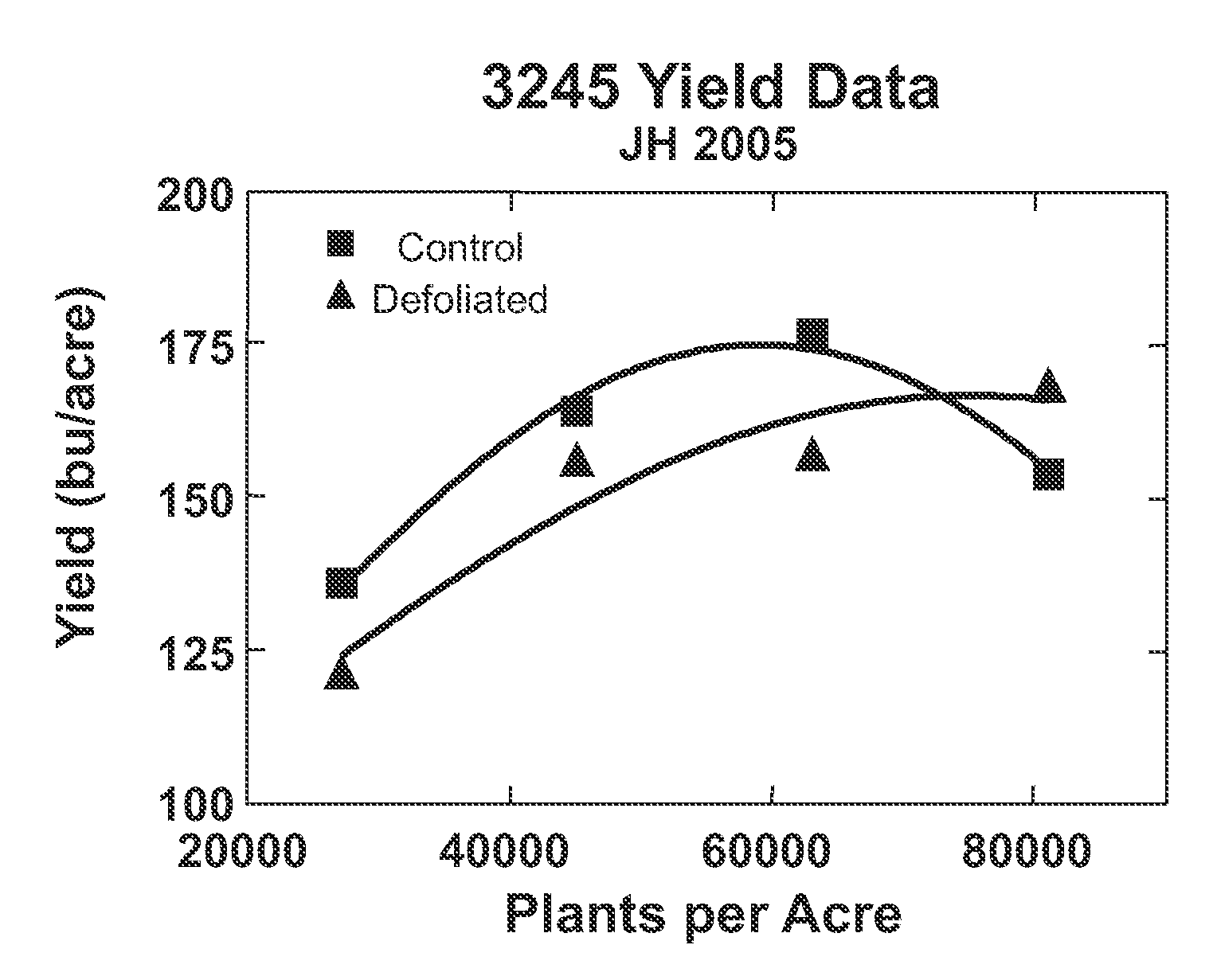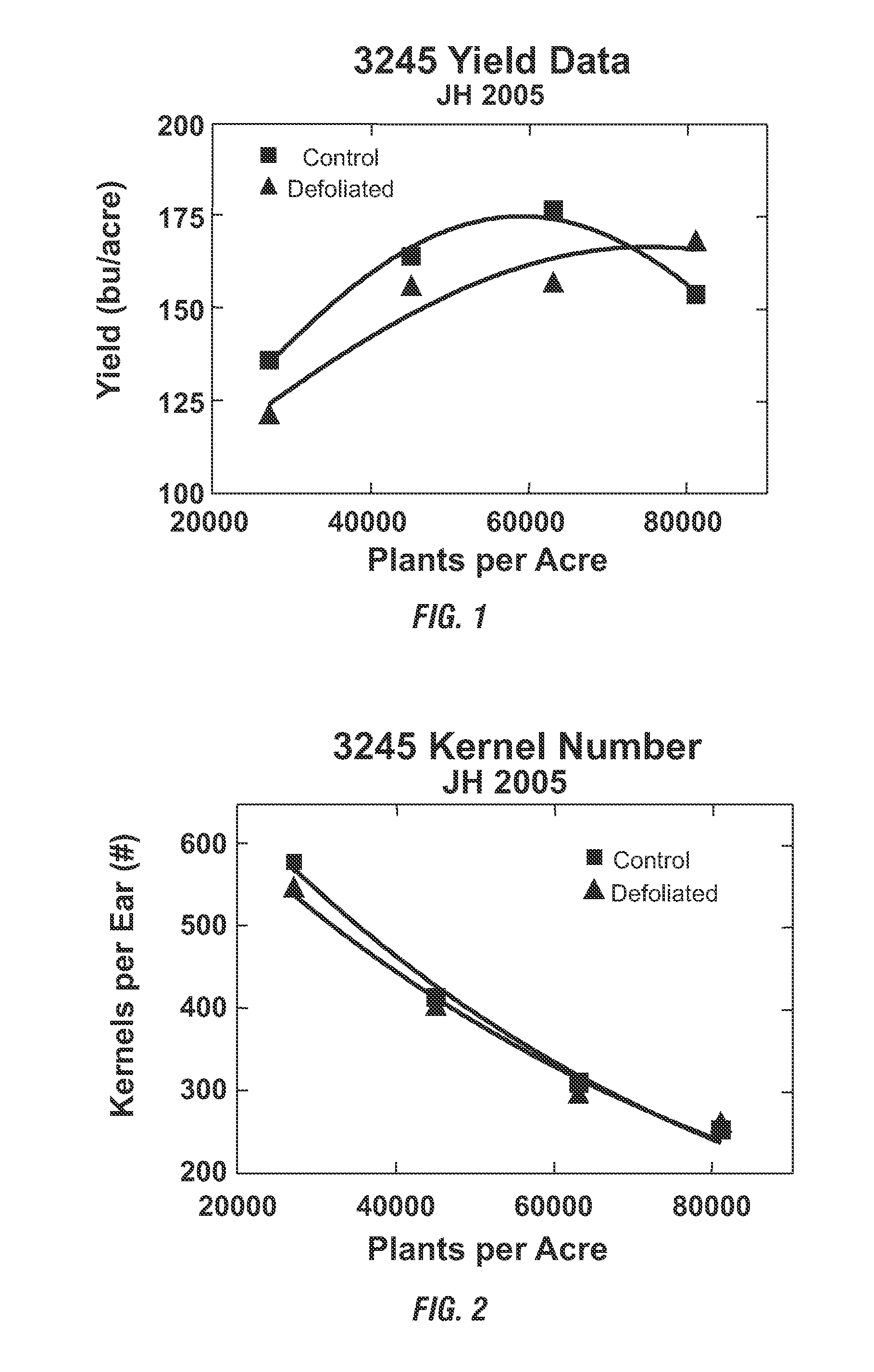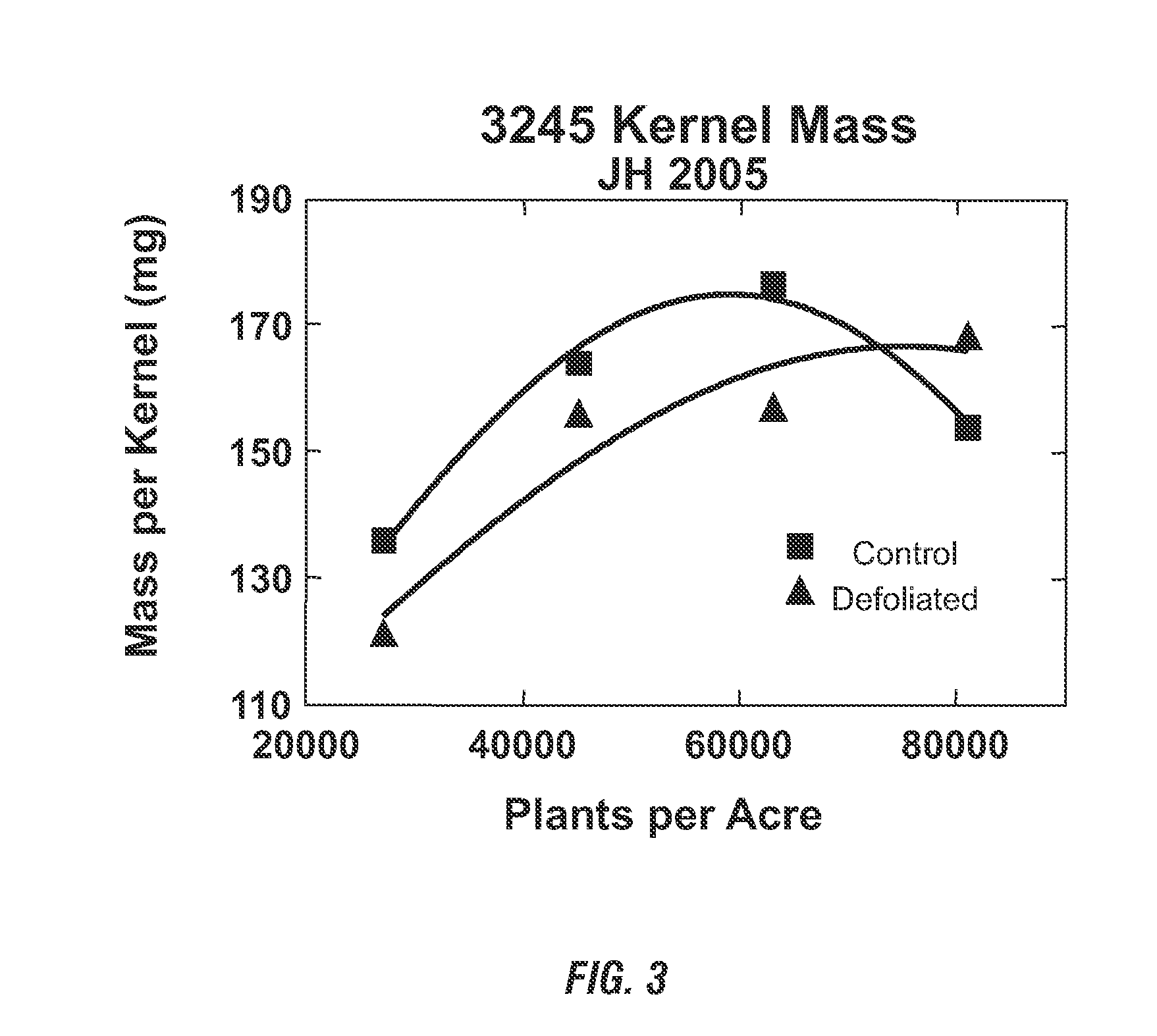Methods to increase yield of plants grown at high populations
a technology applied in the field of high population and high yield methods, can solve the problems of reducing the quality of solar radiation, reducing the quantity of solar radiation ear-leaf of plants grown at high densities, and affecting the yield of maize, so as to achieve the effect of increasing grain yield
- Summary
- Abstract
- Description
- Claims
- Application Information
AI Technical Summary
Benefits of technology
Problems solved by technology
Method used
Image
Examples
example
[0048]Hybrid maize plants were grown in Johnston, Iowa in replicated field trials at varying plant populations: 27,000; 45,000; 63,000; and 81,000 plants per acre. The maize hybrid grown was Pioneer 3245. At approximately 10 days after pollination (before grain fill), the ear-leaf from all plants in a four-row plot was removed to effectuate defoliation. The ear-leaf of all control plants in an adjacent four-row plot was left intact.
[0049]At the end of the growing season, plant ears were hand harvested from the center two rows in each plot and the yield components were analyzed. The grain yield of intact plants is consistent with the industry standard yield data across the tested populations, with a typical curvilinear response and an inflection point around 50,000 to 60,000 plants per acre. (FIG. 1). In comparison, the response curve for ear-leaf-defoliated plants demonstrates an inflection point that has shifted to 70,000 to 80,000 plants per acre, with increased yield over control...
PUM
 Login to View More
Login to View More Abstract
Description
Claims
Application Information
 Login to View More
Login to View More - R&D
- Intellectual Property
- Life Sciences
- Materials
- Tech Scout
- Unparalleled Data Quality
- Higher Quality Content
- 60% Fewer Hallucinations
Browse by: Latest US Patents, China's latest patents, Technical Efficacy Thesaurus, Application Domain, Technology Topic, Popular Technical Reports.
© 2025 PatSnap. All rights reserved.Legal|Privacy policy|Modern Slavery Act Transparency Statement|Sitemap|About US| Contact US: help@patsnap.com



